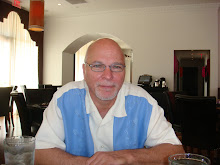This is from GlobalPost.com.
Is there a need to be concerned with these actions in South America? There is a arms race in South America and nobody seems to be aware of it, I don't know why, American Idol isn't on at the moment.
http://www.globalpost.com/webblog/colombia/time-transparency-the-base-agreement
Time for transparency on the base agreement
Monday’s meeting of the South American Union (Unasur) presidents in Quito was dominated by concerns about negotiations between the United States and Colombia to allow U.S. military personnel to use several Colombian bases. Colombian President Álvaro Uribe did not attend the meeting.
(Here is an overview of what we know about what Colombia and the United States are negotiating; it hasn’t changed much since we wrote it three weeks ago. The main change is that two more bases have been added to the list of facilities U.S. personnel can access, apparently at the Colombian government’s request. They are the army bases in Tolemaida, Tolima and Larandia, Caquetá. The basing negotiations could conclude as early as this weekend, says Colombia’s armed forces chief, Gen. Freddy Padilla.)
Some of the region’s elected leaders from the far left had hoped the declaration from the Quito meeting would condemn the basing deal. The presidents were unable to reach consensus on that, but some of the region’s more centrist leaders continued to express concern about the arrangement being discussed between Washington and Bogotá.
One of those leaders, Brazilian President Luis Inacio Lula da Silva, made a concrete proposal to Washington: that U.S. government representatives meet with the region’s leaders to explain the agreement and the U.S. government’s intentions. “UNASUR could invite the U.S. government to a detailed discussion regarding its relations with South America. This will be resolved through a lot of conversation, much debate, the speaking of truths. People will have to hear things they don’t like,” Lula said during the Quito meeting.
This is a perfectly reasonable proposal. A joint meeting with high U.S. government officials - or even President Obama himself, perhaps during the UN General Assembly in New York in September - is a good idea.
Such a meeting would help undo the damage done by the Obama administration’s disastrous rollout of the basing arrangement. The approach so far has combined hyper-secrecy from Washington, leaks to the Colombian media mainly from Colombian government sources, and - in a move that cannot make the Colombian government happy - leaving Colombian President Álvaro Uribe to defend the deal on his own, spending an entire week traveling throughout South America to hear each country’s concerns about the proposed U.S. military presence.
Lula’s proposed meeting also makes sense because once you get past Hugo Chávez’s hugely overheated rhetoric, it makes perfect sense for the region’s governments to be concerned about a foreign power increasing its military presence, and mission, on the continent they share. And it makes sense for this concern to grow when the foreign power does not even notify them of its intentions. The United States is creating a new capability in South America, and capabilities often get used.
While South American concerns are important, the Obama administration also needs to be far more transparent to the American people. As things stand right now, the basing agreement can go forward without any need for the U.S. Congress to act to approve it. But that doesn’t mean that we should be in the disgraceful situation of getting most of our information about the impending deal from the Colombian press.
Obviously, we don’t ask that the U.S. government reveal the content of ongoing negotiations. Talks between governments routinely happen in secret. But we need to know more about what our government’s intentions are.
Until Colombian media outlets started revealing more details about the basing plan in early July, we were under the impression that the United States and Colombia were negotiating a deal to replace a capability being lost with the exit of U.S. assets from a base in the Pacific coastal city of Manta, Ecuador. There, since 1999, approximately 200-300 U.S. military personnel and contractors worked on a mission limited strictly to counternarcotics, specifically monitoring the Eastern Pacific off the coast of South America for potential aerial and maritime drug trafficking. The U.S. presence at Manta - itself a partial substitute for Howard Air Force Base in Panama, which the U.S. military vacated in 1999 - has ceased operations and will close for good in October, as the 10-year agreement has expired and Ecuadorian President Rafael Correa strongly opposes renewing it.
What we have heard about the Colombia deal, however, indicates that the new U.S. presence there will go way beyond Manta’s limited mission. It will support not just counter-narcotics, but “counter-terrorism,” a very vague term in a country in the midst of an armed conflict.
There is an urgent need for more transparency from the U.S. government. More information and responsiveness to questions would help defuse tensions in the region, and is a necessary element of a foreign policy that is accountable to the American people.
Transparency must begin with clear, specific responses to these seven rather basic questions. So far, none of them has been addressed in public.
1. How close will U.S. personnel stationed at the bases - both military and contractors - get to hostilities in Colombia? What is the risk to them?
2. How will U.S. personnel stationed at the bases be contributing to, or otherwise participating in, ongoing military operations in Colombia’s armed conflict? For example, will it be providing real-time intelligence and targeting information about guerrillas or other illegal armed groups?
3. Will activities based at these facilities be limited to Colombian territory and airspace, or will the United States insist on the right to fly over neighboring countries as well?
4. Does the U.S. government view these bases as “lily pads” that will give it the ability to carry out contingency operations anywhere in the region? If not, how is it different?
(For several years, the Defense Department has indicated its desire to establish informal, flexible basing arrangements like these in order to have a forward presence as a jumping-off point. These have been colloquially called “lily pads,” and arrangements have been made for several such facilities in Eastern Europe, Central Asia and Africa. Instead of a base, widely cited defense analyst Thomas P.M. Barnett wrote this week, “Think of them as the networking equivalent of an ATM: offering some basic services but hardly constituting a bank branch. And like an ATM, these facilities are to a large degree designed to obviate the requirement of a larger, dedicated presence.” Obviously, a frog jumping off of a lily pad is jumping to somewhere else; Colombia’s neighbors see themselves as likely destinations.)
5. What is the likelihood that the administration will be asking Congress to raise or eliminate the existing “troop cap” (800 military and 600 U.S. citizen contractors) limiting U.S. involvement in Colombia within, say, 3 years? Can the Obama administration guarantee that it will not seek to increase or break the troop cap as a result of activities at the Colombian bases?
(As of June 19, the Washington Post reported last week, there were 268 U.S. military personnel and 308 U.S. citizen contractors present in Colombia. If the military presence is currently one-third of the cap and the contractor presence is half of the cap even without the bases, how close will U.S. personnel come to breaking the cap once they move into the bases?)
6. Will the physical assets stationed at the bases in Colombia be different from those that were based at Manta? Will the U.S. military be stationing the same aircraft as before? If not, how will the array of planes and equipment be different?
7. The three air force bases in the seven-base package are all located to the east of the Andes mountains from the Pacific Ocean. How will U.S. assets be able to cover the eastern Pacific drug-trafficking vector - which was the main purpose of the Manta base - without a presence on the Pacific coast? What is the likelihood that this move will actually make it easier for narcos to transship drugs through the Pacific?
Wednesday, August 19, 2009
Subscribe to:
Post Comments (Atom)













No comments:
Post a Comment